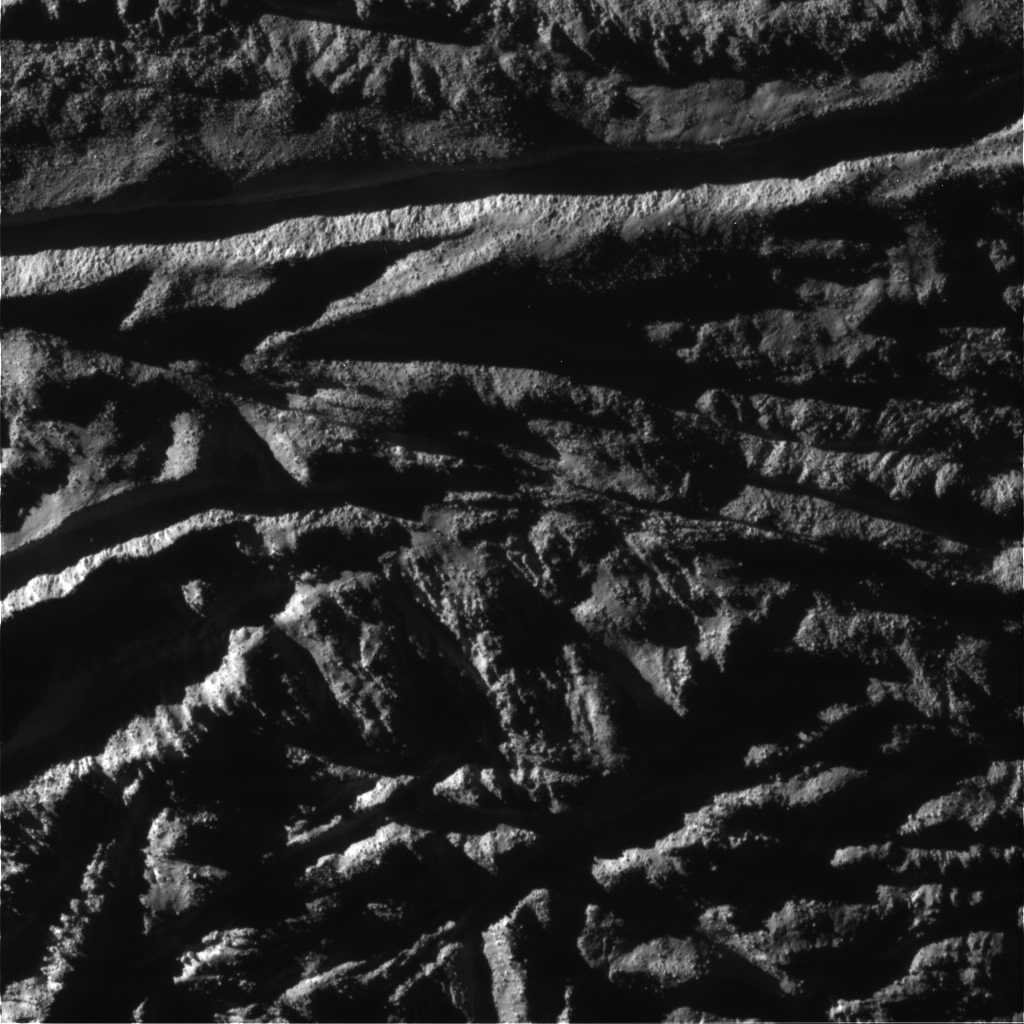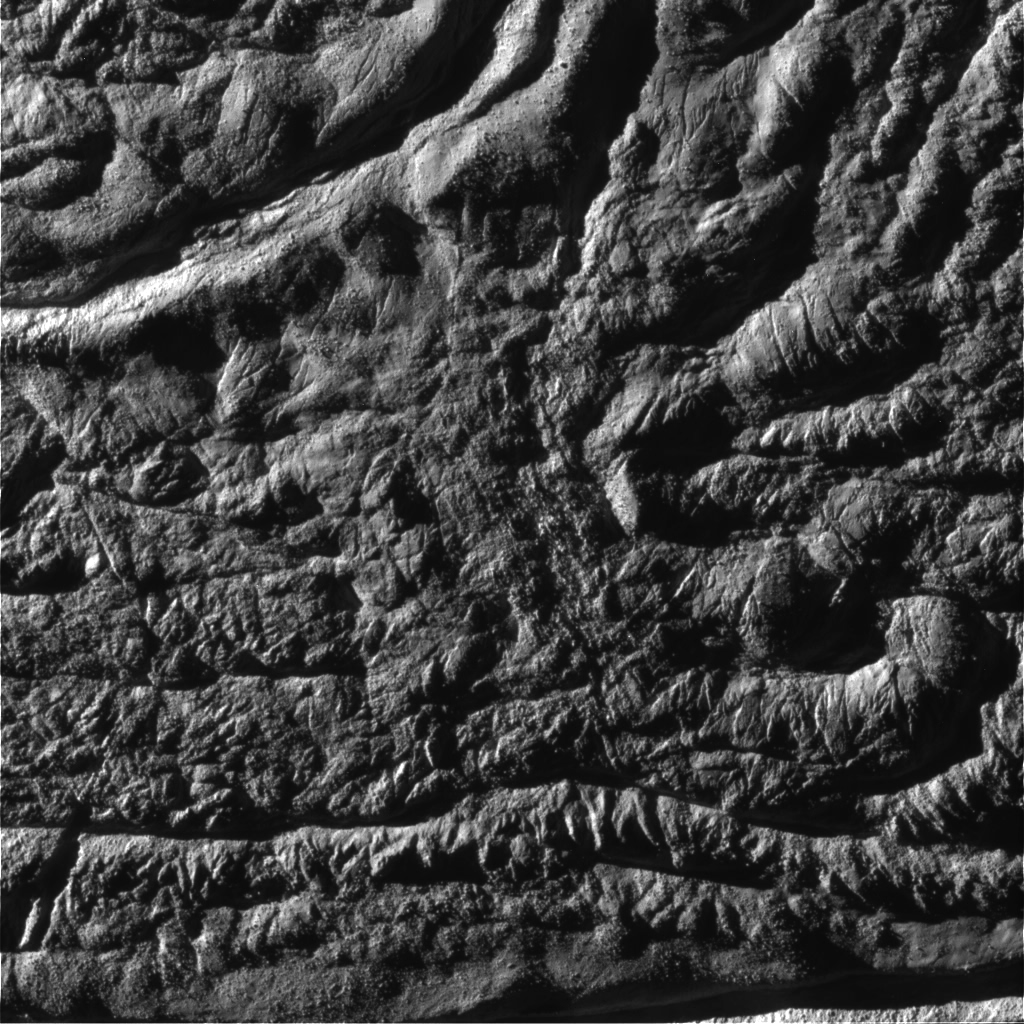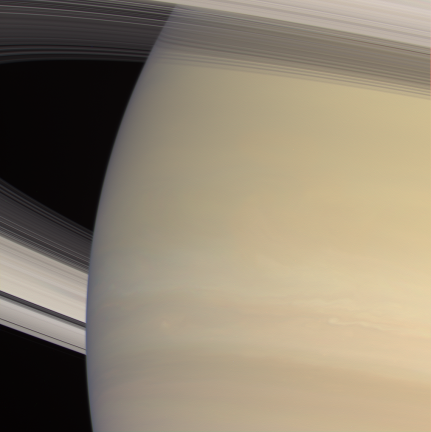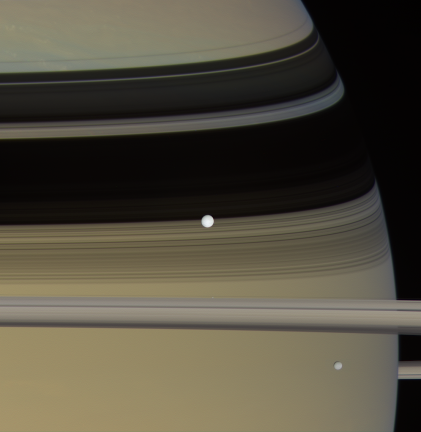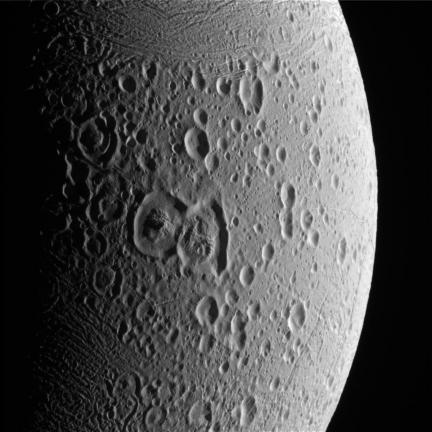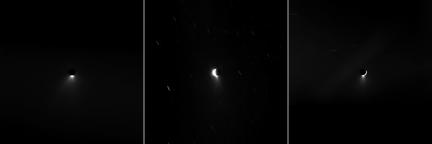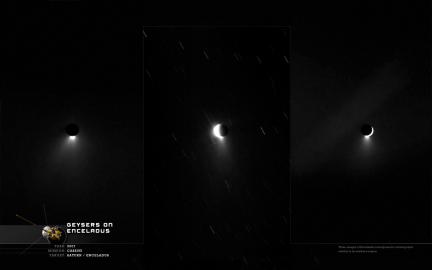More Enceladus from Around 2000 km
Enceladus from 17,495 km
Data Coming in from Enceladus
Another Enceladus Pass: Aug 11
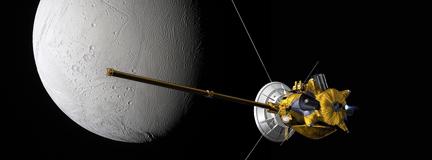 Its been slow around here lately, but the Aug 11 planned close flyby of Enceladus should spice things up a bit. Cassini is now in it’s extended mission and Enceladus has been made a secondary target for the coming months with the primary target being the continued exploration of Titan.
Its been slow around here lately, but the Aug 11 planned close flyby of Enceladus should spice things up a bit. Cassini is now in it’s extended mission and Enceladus has been made a secondary target for the coming months with the primary target being the continued exploration of Titan.
3 More By GU or Saturnati XV
3 intensely nice new views of Saturn by Gordan Ugarkovic.
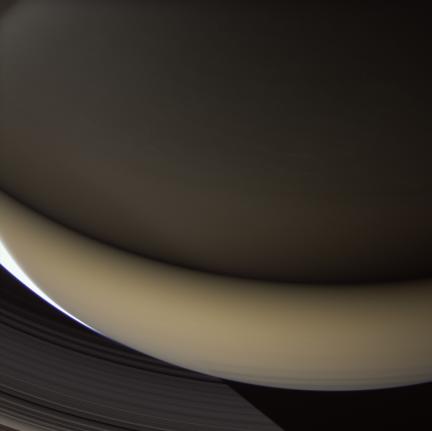
Be sure to click for the hi-res view of this one. Enceladus hangs sharply in front of saturn – doesn’t even look real. I assume the second moon there is Mimas, but notice you can even make out a 3rd moon (Pandora) lodged in Saturn’s rings, right inside the hairline F-Ring.
Plume Diving: The Departure
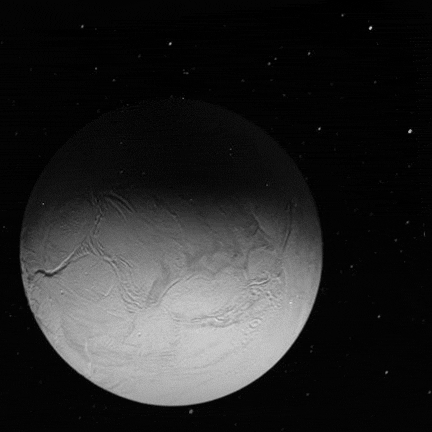 Cassini moves away from it’s risky encounter at Enceladus… This came out so cool that it looks fake.
Cassini moves away from it’s risky encounter at Enceladus… This came out so cool that it looks fake.
IMAGE NOTE: 3 frames of this 13 frame animation were “faked” in that adjacent frames were used to fill in gaps. The size and position of Enceladus was simply adjusted on these frames to create a smoother transition where needed. Additionally, the last 3 frames had stars added to the background for consistency.
Enceladus Unlit by the Sun
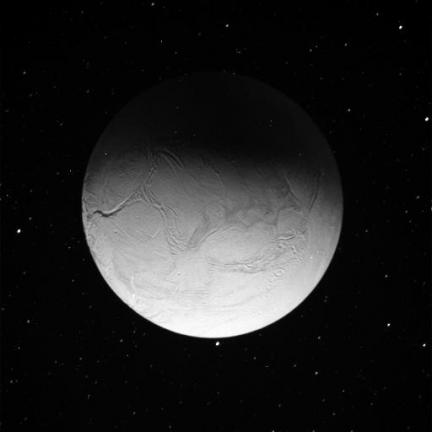 The almost surreal nature of this image is due to this: Nothing in this image is sunlit. According to Emily Lackdawalla’s Planetary Society blog, the lower brightest area is lit by the rings of Saturn, by way of reflection off of Saturn’s disc. The right hand side is comparatively low-lit by the moons Tethys and Dione and the left side is also low-lit by the moon Rhea. To the human eye, this scene would appear far darker than seen here and is a testament to the sensitivity of Cassini’s cameras in low-lit situations. If the sun-lit side of Enceladus presented itself here, it would be a complete white out devoid of any details.
The almost surreal nature of this image is due to this: Nothing in this image is sunlit. According to Emily Lackdawalla’s Planetary Society blog, the lower brightest area is lit by the rings of Saturn, by way of reflection off of Saturn’s disc. The right hand side is comparatively low-lit by the moons Tethys and Dione and the left side is also low-lit by the moon Rhea. To the human eye, this scene would appear far darker than seen here and is a testament to the sensitivity of Cassini’s cameras in low-lit situations. If the sun-lit side of Enceladus presented itself here, it would be a complete white out devoid of any details.
My best guess for all the dots is that some are actually star light, while others are anomalies in the imaging process… for instance, the specks in the image that appear over the disc itself are surely noise.
Enceladus Flyby: A Quick Mosaic
Made partly from the image from the previous post. Click to see it high resolution.

There is word also that some of the instruments failed to relay data. This would be disappointing to say the least. Considering the risk taken to get this close to the plumes… it would be sad to not have the data they were looking for.
An Early Look
It’s Go Time Cassini!
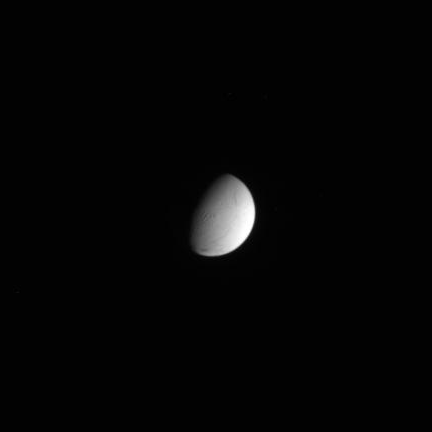 Tonight is the night! Image was taken 2 days before Cassini’s dive through the fountains of Enceladus.
Tonight is the night! Image was taken 2 days before Cassini’s dive through the fountains of Enceladus.
Cassini Goes Plume Diving in 2 Days
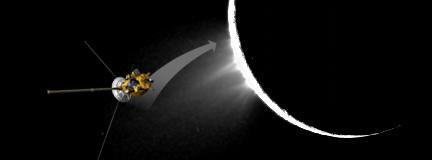 The flyby of Enceladus that will take Cassini directly through the plumes is only 2 days off. Could be one of the best events of the year.
The flyby of Enceladus that will take Cassini directly through the plumes is only 2 days off. Could be one of the best events of the year.
Highlights for 2008
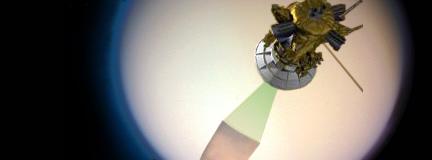 Cassini takes a pass at Titan on February 22 (already having made a pass this year on January 5th).
Cassini takes a pass at Titan on February 22 (already having made a pass this year on January 5th).

Soon after Titan, Cassini performs a truly unexpected maneuver and flies directly through the plumes of Enceladus on March 12th. This is a somewhat risky task for the probe as the particles it will surely encounter may pose some kind of impact threat to the spacecraft. Mission planners expect the risk to be low as they intend to turn the spacecraft around and let the less delicate side of Cassini bear the brunt of the material and photograph the geysers as it moves away from Enceladus. It should make for some of the most exciting planetary science planned for this year.

Cassini has another go at Titan on March 25.

Yup – you guessed it. Cassini at Titan again on May 12th.
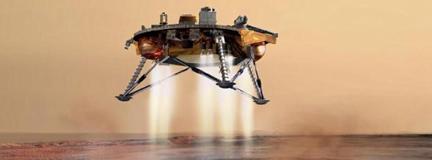
The Phoenix lander arrives at Mars on May 25th and (hopefully) makes good on the failure of the Mars Polar Lander. It will be the first time a probe will attempt a landing on the Martian pole and will conduct a series of experiments looking for the existence of water ice.

You can never have too much of a good thing. Cassini at Titan again on May 28th as well as July 31.
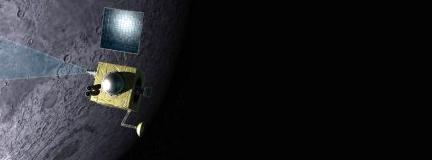
Chandrayaan becomes India’s first planetary probe as it leaves for the moon in Early July (was April).

The extended Cassini mission has made Enceladus a prime target of investigation and the new encounters begin on Aug 11th and comes within 54km of the surface.
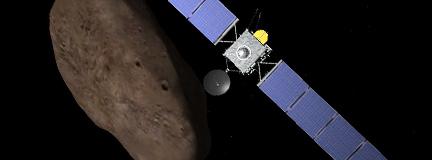
Rosetta still on its way for an encounter with Comet 67P/Churyumov-Gerasimenko in 2014, will make a close pass at an asteroid named 2867 Steins on Sept 5th at a distance of only 1700 km. Steins is a small asteroid measuring only a few kilometers in size and the craft will be traveling at a relatively slow speed which should allow for some good resolution images to be acquired during the encounter.
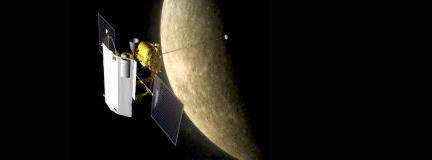
Messenger (having just completed the first encounter in 33 years this past week) has another go at Mercury on Oct 6th and flies past more uncharted territory on its way to eventual orbit insertion in 2011.

Two more close flybys of the Saturnian moon Enceladus on Oct 9 and Oct 31. The first at hair-raising distance of 25km and the second around a more reasonable 200km.
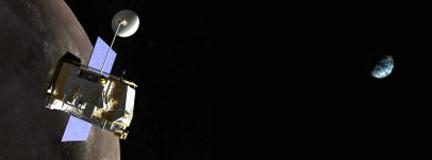
In an effort to recognize the International Lunar Decade (and intended manned Lunar missions within 15 years), the United States returns to the moon with the Lunar Reconnaissance Orbiter on Nov 3rd. It is expected to begin its scientific goals only 3 days after launch and is expected to look for possible deposits of water ice in permanently shadowed craters near the Lunar poles.

And finally more Titan flybys on Nov 3, Nov 19, Dec 5 and Dec 21.
All this is in addition to the ongoing work of Opportunity and Spirit on the surface of Mars. Mars Express and Mars Reconnaissance in orbit around Mars. Cassini’s non-targeted continuing tour of other icy Saturnian moons. And who knows, maybe we will see more than 2 or 3 reports coming from the ever quiet Venus Express mission currently at Venus.
Sadly, some very exciting missions will be quietly traveling en route to their targets and are not expected to be heard from in 08 like the Dawn Mission to the Asteroid Belt, New Horizons mission to Pluto/Charon, the newly re-targeted Deep Impact mission (now known as Epoxi) as well as Stardust now on its way to a follow-up visit to Tempel 1 the comet that was smacked by Deep Impact in 2005.
The iPhone Set 01: Bodies of Major Interest
 If I am going to keep making these things… I’d be a fool to not include a set for the Apple iPhone. Coincidentally, when you purchase your iPhone and do not yet have a phone service, the phone displays a full-disc image of the Earth pretty much displayed exactly as these do when uploaded to your iPhone. So in the spirit of continuity, you can now opt instead to have Mercury, Venus, Earth, The Moon (Luna), Mars, Jupiter, Io, Europa, Ganymede, Callisto, Saturn, Enceladus, Titan, Iapetus, Hyperion, Uranus, Miranda, Neptune or Triton grace your screen instead of the default Earth.
If I am going to keep making these things… I’d be a fool to not include a set for the Apple iPhone. Coincidentally, when you purchase your iPhone and do not yet have a phone service, the phone displays a full-disc image of the Earth pretty much displayed exactly as these do when uploaded to your iPhone. So in the spirit of continuity, you can now opt instead to have Mercury, Venus, Earth, The Moon (Luna), Mars, Jupiter, Io, Europa, Ganymede, Callisto, Saturn, Enceladus, Titan, Iapetus, Hyperion, Uranus, Miranda, Neptune or Triton grace your screen instead of the default Earth.
The easiest way to install wallpapers to your iPhone is to make a special set in iPhoto and simply drag all the files to that folder. Then in iTunes have your iPhone sync that folder to your photos collection. After that it is as simple as opening the “Photos” area of your iPhone. Go to your new folder of images and open whichever image you want. Then tap on the image just once and assign it as a wallpaper using the “Use as Wallpaper” button in the lower left corner of the screen.
If you have a PC I have no idea in hell how the hell you get images into your iPhone. I would buy a Mac… you have an iPhone and use iTunes… you are half-way there.
For a version of these with no graphics see this link.
Cassini Team Shows Some Color
NASA released an unusually large amount of color images to the Cassini website recently. Most of what is shown here on this site are actually images put together by freelance imagers who access the raw files and do some stitching together of filtered images. Color images coming straight off the Cassini website are a rare event, so when about 8 appeared in the gallery a few days ago… it was an unexpected gift.
 Saturn as seen from the unlit side of the rings.
Saturn as seen from the unlit side of the rings.
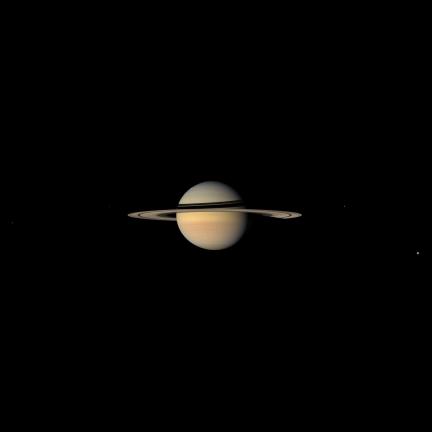 A family portrait of the Saturn System. Moons visible in this image (you need to click the preview) are Dione at far left, Enceladus near the left side ring edge, Mimas a speck on ring shadows on the western limb, Rhea against the northern hemisphere, Tethys near the right ring edge, and Titan near lower right.
A family portrait of the Saturn System. Moons visible in this image (you need to click the preview) are Dione at far left, Enceladus near the left side ring edge, Mimas a speck on ring shadows on the western limb, Rhea against the northern hemisphere, Tethys near the right ring edge, and Titan near lower right.
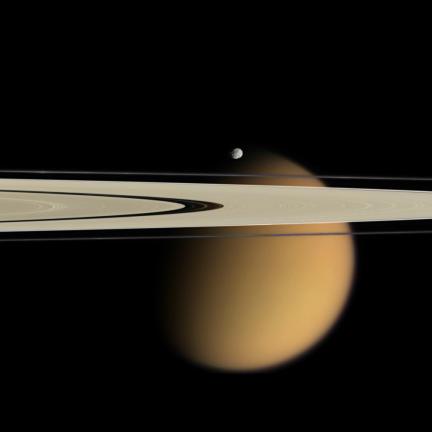 Titan and a small moonlet named Epimetheus share the frame with Saturn’s rings.
Titan and a small moonlet named Epimetheus share the frame with Saturn’s rings.
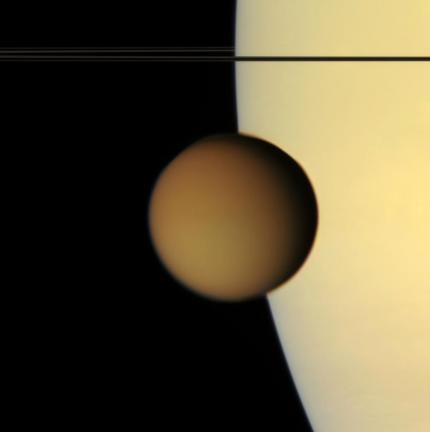 A rare color view of both Saturn and Titan in one frame. This is the only one of its kind thus far in the mission.
A rare color view of both Saturn and Titan in one frame. This is the only one of its kind thus far in the mission.
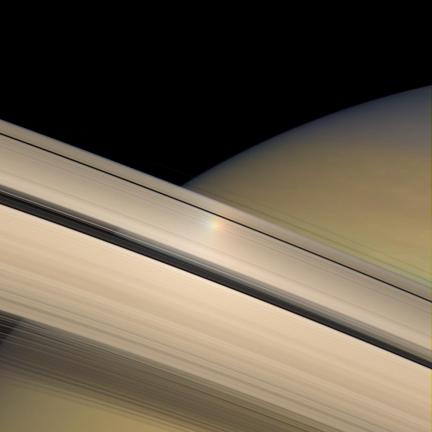 A small rainbow appears as sunlight streams through Saturn’s rings.
A small rainbow appears as sunlight streams through Saturn’s rings.
Kodak Moment: Enceladus
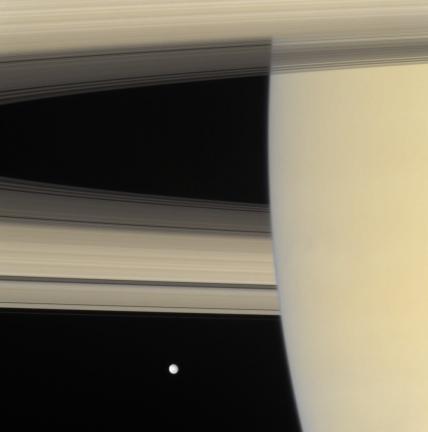 Following up on yesterday’s post, Gordan Ugarkovic found another “Kodak” moment involving Enceladus from the recent raw images. The Cassini team apparently will arrange to have the probe snap these kinds of images every so often to essentially fulfill PR needs. They have actually dubbed them as “Kodak Moments” when planning for gathering more compositionally compelling images of Saturn and its moons for public consumption.
Following up on yesterday’s post, Gordan Ugarkovic found another “Kodak” moment involving Enceladus from the recent raw images. The Cassini team apparently will arrange to have the probe snap these kinds of images every so often to essentially fulfill PR needs. They have actually dubbed them as “Kodak Moments” when planning for gathering more compositionally compelling images of Saturn and its moons for public consumption.
Shouldn’t there just be an Ugarkovic category at this point?
Enceladus, Mimas Transit Saturn
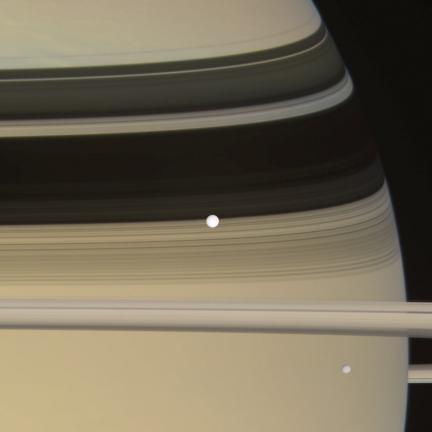 Here is a recent set of raw Saturn images (red, green and blue filters) combined to create a near-true color shot.
Here is a recent set of raw Saturn images (red, green and blue filters) combined to create a near-true color shot. 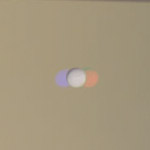 Of course, the moons and Cassini were both moving and changing the perspective of the 3 bodies from one another from one filtered exposure to the next (the effects of which can be seen at left). So it was required that the 2 moons be “lifted” from the main image, properly registered for each individual moon and then merged back into the main composition. Once in place, a bit of Photoshop retouching was needed to erase the echoes in the 2 other channels where the moons were before registration was corrected.
Of course, the moons and Cassini were both moving and changing the perspective of the 3 bodies from one another from one filtered exposure to the next (the effects of which can be seen at left). So it was required that the 2 moons be “lifted” from the main image, properly registered for each individual moon and then merged back into the main composition. Once in place, a bit of Photoshop retouching was needed to erase the echoes in the 2 other channels where the moons were before registration was corrected.
The raw files archive on the Cassini site only reports which object was targeted, so it did not specify that the other moon is Mimas… but I cannot image what other globe that could possibly be seemingly inside Enceladus’s orbit.
Cassini to Go Geyser Diving?
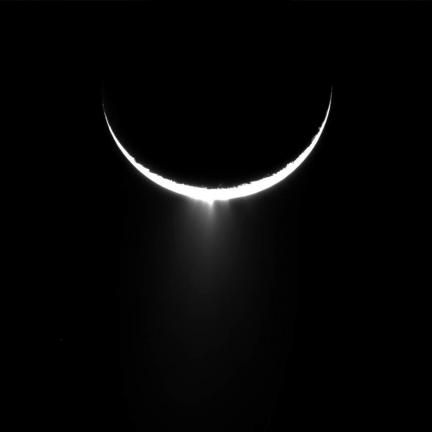 There has been a plan for Cassini to make a close flyby of Saturn’s moon Enceladus early next year. The plan was that while Cassini is doing its usual orbiting of Saturn, that it would be tweaked to come within about 1000 km of the small icy moon and make observations. But that plan may be revised soon to include what would likely be the most dangerous maneuver Cassini has made since its orbit insertion and passing through the ring-plane.
There has been a plan for Cassini to make a close flyby of Saturn’s moon Enceladus early next year. The plan was that while Cassini is doing its usual orbiting of Saturn, that it would be tweaked to come within about 1000 km of the small icy moon and make observations. But that plan may be revised soon to include what would likely be the most dangerous maneuver Cassini has made since its orbit insertion and passing through the ring-plane.
The new plan is for Cassini to pass within 30 km of the surface of Enceladus… which is in itself an impressive move. What makes this even more daring is that the path should take the probe straight through one of the moon’s many geysers in its southern region. To survive what will likely be a barrage to tiny particles coming from these plumes, the cameras will be facing away from this activity as the body of Cassini itself (which is fortified with a protective shell) should take the brunt of the damage. After this most dangerous phase the cameras will capture details of the geysers and Enceladus itself as the probe moves safely away from the body. Additionally, this close plunge should also allow other instruments on Cassini to get a good scent of these materials as well and should be able to accurately describe what exactly is coming out of the geysers.
Should this plan be adopted, the event is scheduled for March of 2008.
Various Recent Enceladus Images
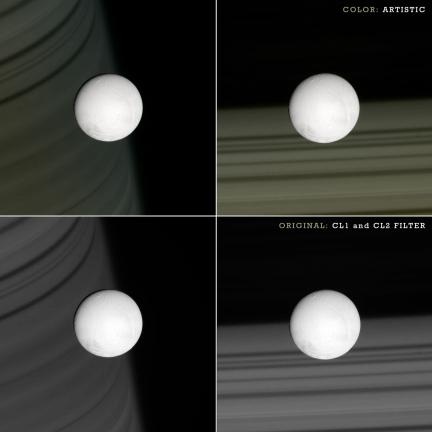 Rather than waiting for NASA or U. Gordan to colorize this recent image of Enceladus against Saturn, I took it upon myself to fake it myself. I usually do not like to do it this way as it potentially misrepresents what the actual colors may look like, but I really think that these faked versions (also referred to as artistic representations) are likely pretty close. What was done was to add colors to the image based upon what other color images of similar conditions have looked like. The only thing that may be off is that the ring shadow colors may have been that Saturn peach (which in shadow looks brown) rather than the blue-green used here. Since other images of Dione shot against Saturn ring-shadows had the blues in them, I thought there was a pretty good chance this did as well. In the interest of telling the truth the originals have also been included.
Rather than waiting for NASA or U. Gordan to colorize this recent image of Enceladus against Saturn, I took it upon myself to fake it myself. I usually do not like to do it this way as it potentially misrepresents what the actual colors may look like, but I really think that these faked versions (also referred to as artistic representations) are likely pretty close. What was done was to add colors to the image based upon what other color images of similar conditions have looked like. The only thing that may be off is that the ring shadow colors may have been that Saturn peach (which in shadow looks brown) rather than the blue-green used here. Since other images of Dione shot against Saturn ring-shadows had the blues in them, I thought there was a pretty good chance this did as well. In the interest of telling the truth the originals have also been included.
Turns out U. Gordan did do one as well here.
Of the recent raw images of Enceladus, these had some interesting qualities I thought worth posting. They are more of the over-exposed variety for the purpose of exposing the geysers that have been discovered in the southern regions. I just thought at this further distance some of the images had a different feel to them. I highly recommend clicking on them for the high-res versions as nothing can be seen from the above thumbs.
Additionally, not sure… but I am thinking that third image may include the torus generated by the geysers or is that just a lens distortion of some kind?… anyone? I am thinking it is not an artifact as you can see a shadow of enceladus cutting through it diagonally in the upper-left.
And the wallpaper.
Wallpaper: Geysers on Enceladus
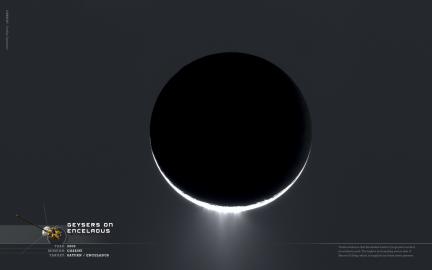 Visual evidence that Enceladus hosts cryo-geysers around its southern pole. The lighter surrounding area is due to Saturn’s E-ring, whose materials are supplied by these same geysers.
Visual evidence that Enceladus hosts cryo-geysers around its southern pole. The lighter surrounding area is due to Saturn’s E-ring, whose materials are supplied by these same geysers.
This is another image supplied by Mr. Gordan Ugarkovic who notes that “this is a colorized image, artificial color was added to make the plumes and E ring subtly bluish, while saturnlit portion of Enceladus slightly brownish. In reality no color frames were taken, only clear filter ones”.

